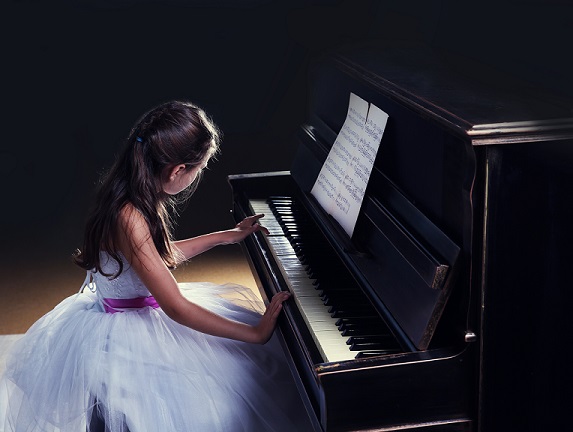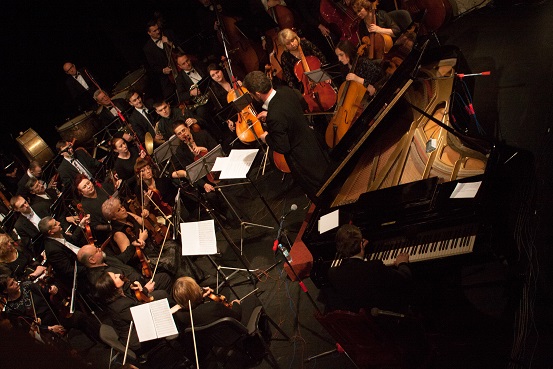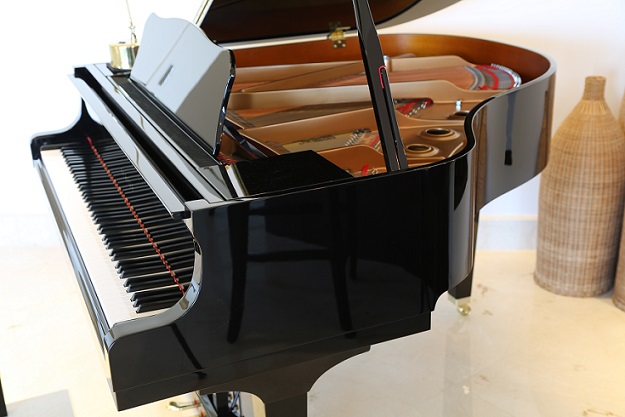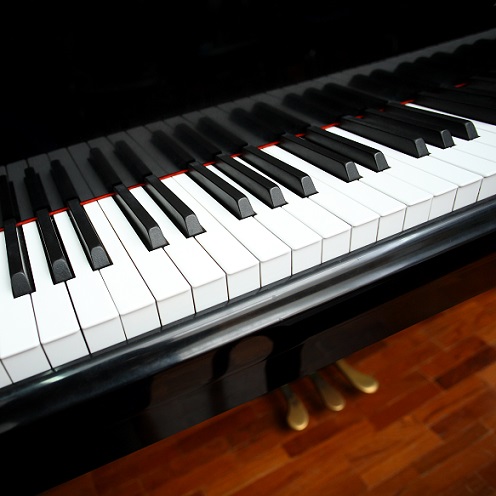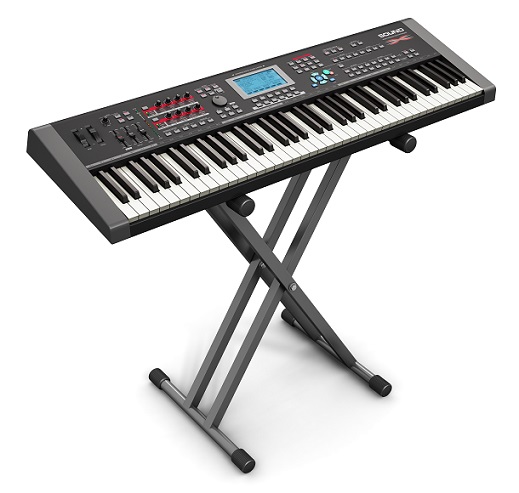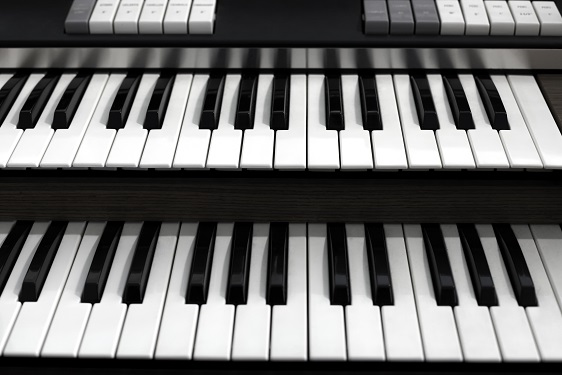Beginning to learn any musical instrument is never an easy feat. It is always these beginnings that will be the most difficult for anyone. Except for uberly talented people.
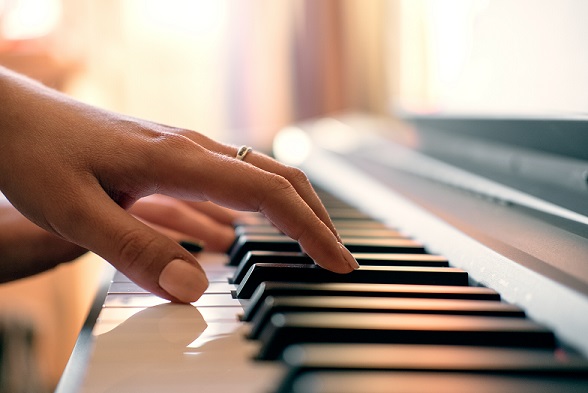
When learning any instrument for the first time, you have to keep an open mind. Not only about the things you’re supposed to learn, but also about the struggles you will be facing. For instance, in the middle of trying to learn the piano, you might feel like it doesn’t suit your capabilities at all. You feel as if the piano isn’t for you.
That’s perfectly natural. Instances like that don’t mean that you’re not competent or good enough. Remember that even in musical instruments, “to each their own” applies.
Where (or How) Do You Start?
Music is one of my greatest passions in life. My dad used to play different instruments for me like the guitar, drums, and the piano. However, among all those three instruments, it was the piano I fell in love with the most.
This might be a little biased, but I also chose to learn the piano instead because of my short fingers. I had the most difficult time of my life playing the guitar. I even felt bad when every key sounded off.
When I started playing the piano, I started learning the basic chords (or notes, for some) first. Choose if you want to learn the piano by notes or chords. For me, it was easier to learn the chords since I had no piano tutor of some sort. I memorized all the key chords from A to G as well as all their majors and minors. However, simply memorizing the chords or notes is not enough.
Practice is everything
You must try doing different practice exercises to get your fingers used to the different speeds, techniques, and pressures needed for playing the piano. There are a lot of videos out there that can help you train your fingers.
Listen to music
Second, try listening to different piano instrumentals or songs. This will help your ears get accustomed to the keys. Learning any particular song by the book might be a bit of a hassle. Forget one key, and you won’t be able to play a whole chunk of the song anymore.
But when you try playing a song by ear, it’s easier to remember which keys you used to play it. Some are exceptionally gifted in learning new songs to play this way. Do note however that this is just a tip. There are also a lot of people out there who find it hard to differentiate which key is which regarding sound. That is fine.
Be persistent
Lastly, do not stop playing. Once you’ve decided that you want to learn the piano, do not stop practicing. You ought to take a break and all, but don’t take a break for too long. Any conditioning your hands and fingers might’ve achieved might end up going back to square one.
Why Should You Play The Piano?
Every musical instrument is beautiful. All of them make excellent music alike. This is why choosing which instrument to start learning with is tough. You can opt to learn as many instruments as you’d like. However, becoming an exceptional player in almost if not every instrument you’ll be playing is not an easy task. (If that’s what you strive for)
Should you choose to start with the piano, here are several things (good things) you might want to consider.
If you are into classical music
The piano is a good instrument to start with if you love classical music. There are a lot of classical pieces out there which you can play with only the piano. Some might say that the violin is also perfect for classical music, but for me, I think that the piano is a lot easier to learn. There are no forms you have to get accustomed to. Just hand movements and chords. (mind your back too, you don’t want to end up like Quasimodo)
If you have short fingers
Now, I’m not saying that the piano is the easiest to play for people with short fingers or small hands. It isn’t, but it’s one of the easiest. There are no strings that you have to reach or percussions you need to strike. You simply need your fingers to get accustomed to various speeds of pressing keys to reach as many keys as you can when playing a song. Quite similar to speed typing on your laptop, right?
If you don’t like standing up while you play
If you simply just want to chill or lounge in your house without exerting much effort to play, the piano is your good friend. You can say that a guitar and the drums can also be played sitting down. However, some find it hard to play the guitar while sitting down and it is no joke to play the drums even when you are seated.
The Downside Is…
You can, but it’s hard to take the piano out. If you plan to play somewhere else or attend a gig, even a digital or portable keyboard was difficult to bring with you. Taking good care and maintaining your piano (or portable piano) is not as easy especially if you’re very busy.
But do not let this factor scare you off from trying to learn the piano. It will be very rewarding if you hear yourself a few days from now, playing the Canon in D on piano.
What to Consider When Buying Your First Piano
For a beginner, buying your first ever piano can be one of the toughest yet most exciting decisions in your life. Pianos are not disposable items that you can simply dispose of and call it a day. You should consider a piano as a lifelong investment. Ample research and a lot of reflecting are a good practice before buying your piano.
For starters, before you buy anything, you need to have a vision of what pianist you’re going to be. Are you serious about playing the piano? Are you trying to get into a grand competition someday? Or are you planning to be a piano tutor in the teacher? Or is playing the piano only passion that you would want to consider as a hobby?
Different pianos accommodate different needs. There are about five main kinds of pianos that you would easily find in a music store. Each piano is unique and can help you in your endeavor. With that said, let us first discuss 3 of the most common pianos that you can choose from.
1. Acoustic Piano
Foremost, let’s get down to the greatest of pianos, the acoustic piano. Acoustic pianos are typically the best pianos regarding sound and performance. It’s the kind of pianos you see in classic films and grand competitions. It’s a piano fit for the Mozarts and the Beethovens of the piano world. An acoustic piano has two variations. These are the grand and upright pianos.
The two main differences between these two are its frame and strings. Grand pianos have horizontal strings that extend to the keyboard. It relies on gravity when it comes to its strings’ mechanism. The sheer size of this piano makes it the best-sounding piano. This is because it greatly reduces inharmonicity between the strings. Unfortunately, this piano is the most expensive and least convenient.
On the other hand, the upright piano has a vertical frame with vertical strings. This makes it more compact and also less expensive. It’s a piano usually used in churches and other worship places.
2. Digital Piano
Digital pianos are probably the most versatile out of the three that we will list. It’s affordable and thanks to today’s technology, its music sounds great too. Unlike the acoustic, it doesn’t have any strings or hammers. Therefore, it relies on digital sampling to imitate an acoustic piano. You can say that the digital piano produces artificial sounds. Hence, it needs an amp and stereo.
It has a lot of musical features and makes use of technology to its fullest extent. Although the sound isn’t authentic like an acoustic’s, it tries to mimic it. There are a lot of brands that have come close in making their pianos sound like an acoustic.
3. Electronic Keyboards
Electronic keyboards are also non-acoustic. Instead of producing actual music, it uses oscillators and other filters. This acts as a synthesizer that imitates the piano sound as well. Usually, electronic pianos are just basic simulators. Because its mechanism is basic, don’t expect too much from this. It won’t have advanced features like the digital piano.
Examples of this feature are advanced sound engines and hammer actions. Still, it’s a great device to use for beginners. It’s typically bought by tutors who are mentoring young students.
Brands and Products to Look at
After reading the previous section, you should have a clearer grasp of what you want to buy right now. With that said, let’s go a little further and tackle the best brands and their best products. Take note that this isn’t an advertisement. I’m only trying to give you a guide to help you find a starting point. Furthermore, I’m picking the best ones based on reviews and the credibility of the company.
Yamaha
Yamaha is a Japanese brand that is known not only in the piano industry but generally in music. It became so famous because of its products that are affordable yet great. One of the features that Yamaha is proud of is its Graded Hammer Standard (GHS).
The GHS is a feature of Yamaha’s digital pianos. Examples of these pianos are the Yamaha P115, DGX-660, and P45. The GHS is a feature that aims to give you a closer experience to a real acoustic piano. Remember, a digital piano does not have hammer action or strings. However, this innovation by Yamaha tries to imitate that through the GHS.
Moreover, Yamaha also boasts a sound engine the CF Pure. This is the main component of Yamaha’s digital pianos that causes a rich sound when you play it. Pianos like the Yamaha P115 and P45 also have this feature. If ever you’re interested in pursuing a real piano, one of the best out there is the CFIIIS concert grand piano. This is the piano that sets the standard for Yamaha pianos.
Casio
Casio is another brand that’s climbing the ranks. It’s not much of an expert in acoustic pianos. However, Casio produces great digital and electronic pianos. It boasts AiR or the Acoustic Intelligence Resonator which is designed to recreate acoustic piano sounds.
Casio also has the Tri-sensor hammer-action keyboard. Having this feature enables you to play all of the dynamics of a piano. To briefly explain, it measures the speed and velocity when you hit the keys. By doing so, it gives more depth and dimension to your sound.
Roland
Roland is another leading company in the piano industry. Typically, their products are the finest of pianos. Their specialties are acoustic pianos, specifically the grand piano. For example, the GP607 is a grand piano that comes in a smaller scale. This reduces the usual problem of a grand piano is too big.
Its PHA-50 keyboard is one of the main features that can catch your attention. It has an expressive touch paired with ivory and ebony keys. Hence, the sound isn’t only real, but you also get maximum touch with the perfect weighted feel whenever you play the piano. Speaking of sound, the pianos of Roland is carefully built through its SuperNatural Piano Modeling technology for a very authentic and pure sound.
The Roland also has digital pianos. These pianos are designed to imitate their luxurious acoustics. Furthermore, they also have upright pianos for those who are interesting in owning one to save space and money. Roland has been one of the better brands out there, so expect quite a price when checking their pianos.
At the end of the day…
Whatever the brand of your digital piano or acoustic piano is, your determination and patience to learn to play are the ones that will make you a successful pianist. Don’t worry even if you think it is already taking you too long to learn to play the piano. Also remember, that like any other musical instrument, the piano is not for everyone.
If unfortunately, you feel like it isn’t the one for you, do not be afraid to try out other instruments. But if you feel like the piano has become your best friend, then good for you. The piano might become one of your oldest and longest-lasting friends.

